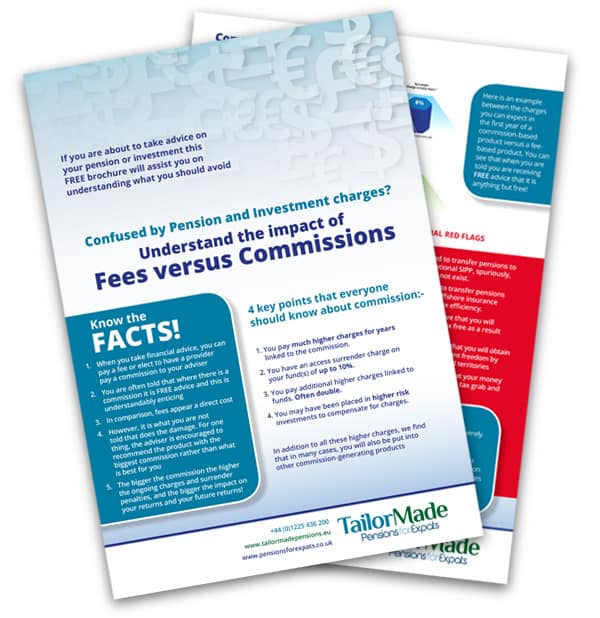Transparency, as a description of advice delivery, is being used more and more by firms involved in financial advice. However, what does transparency mean?
While we have been banging on about transparency for years (since 2008), is our interpretation different from others?
Transparency- Definition
According to UK regulators, transparency should :
- Improve the clarity of the services provided to a client by an adviser
- Prevent adviser remuneration from distorting consumer outcomes, and
- Allow a client to make a proper comparison of advice and services offered without commission or fee bias.
Indeed, transparency in a business or governance context, is honesty and openness. Transparency and accountability are generally considered the two main pillars of good corporate governance. They are reflected in a good firm by detailing every aspect of charges and access of an investment or pension allowing full understanding and comparison for every client.
Non-UK Definition of Transparency
Product A and product B are recommended to a client, the client is told that wrapper fees are 1% pa for both. The commission is payable in accordance with a commission cap that is compliant and transparent. Which product offered the best value?
Unfortunately, there is insufficient information about the product costs and the likely impact of these costs that significantly reduce savings/pensions . There is no mention of the costs linked to bid/offer spreads or ongoing fund charges and, without that information, a useful comparison cannot be done.
This form of transparency may have satisfied a UK regulator in 1995, but not now.
Our definition of transparency
This has been driven, as part of a process over the last 22 years in the UK, by regulation, competition, public interest and an increasing level of professional standards.
What is transparency?
- Agreed fees with a client before undertaking any advice which completely removes commission bias and expresses the fees; in explicit monetary terms not percentages.
- Adviser fees not being contingent upon a client buying a product, but linked to the client receiving the right outcome and advice – The advice may be to do nothing at all.
- Illustrations of the effects of those adviser fees on any investment, if those fees are taken from an investment as remuneration
- Soft fees.These are all the jollies and free gifts that the investment and pension firms often offer to provide to advisers, helping to persuade them to recommend their products. Transparent advisers will not take these trips abroad and expensive gifts- However, a diary once a year would be appreciated 😉 ( A register of gifts should be kept by a transparent IFA )
- The fees of the products must be disclosed, again in monetary terms. For example the wrapper (be it an insurance bond or a platform) cannot just refer to a percentage over a number of years, the fees must be clear.
- Exit fees or surrender penalties. The transparent adviser will tend to recommend investments and pensions without any exit penalties if at all possible (Fixed income products such as guaranteed deposits may have such penalties). If there are penalties, they must be disclosed.
- Fund management fees. This is a subject in itself but the investor must be aware that there are clean funds and commission paying funds/mirror funds. Quite often, the latter two being twice or three times the annual cost of the clean funds. This is because commission is taken by the insurance company/platform and does not form part of the overseas “transparent” disclosure to the client – in the UK this part of transparency alone has led to fund costs dropping substantially. These reduced fund costs could make a substantial difference to a client’s overall financial well-being.
- Agreed ongoing advisory fees, again in monetary terms, and for an agreed service level (not once a year meetings).
RDR and transparency
Has transparency become a buzzword for firms that recognize its significance, want to jump on the bandwagon and forget the baggage they have left behind?
Probably!
While many non-UK firms refer to transparency, and the UK Retail Distribution Review, their interpretation of transparency is just about declaring some commission and a “1%“ongoing charge. This is not transparency, this is commission disclosure which was introduced in the UK over 20 years ago.
Transparency allows clients to recognise and understand all the charges of all the working parts. This includes surrender charges, penalties, fund charges, product charges, bid/offer spreads, commissions and fees.
TMP advisers adhere to the principles of transparency for the benefit of our clients.
The views expressed in this article are not to be construed as personal advice. You should contact a qualified and ideally regulated adviser in order to obtain up to date personal advice with regard to your own personal circumstances. If you do not then you are acting under your own authority and deemed “execution only”. The author does not except any liability for people acting without personalised advice, who base a decision on views expressed in this generic article. Where this article is dated then it is based on legislation as of the date. Legislation changes but articles are rarely updated, although sometimes a new article is written; so, please check for later articles or changes in legislation on official government websites, as this article should not be relied on in isolation.
This article was published on 29th March 2017
Related Stories:
- Commission or Fees QROPS – a no brainer?
- Investment and pension free advice
- Financial Advice or Financial Products?
- QROPS Fees, Transparent Charges and Commissions
- Don’t Just Do Something – Stand There!
Share this story







